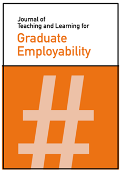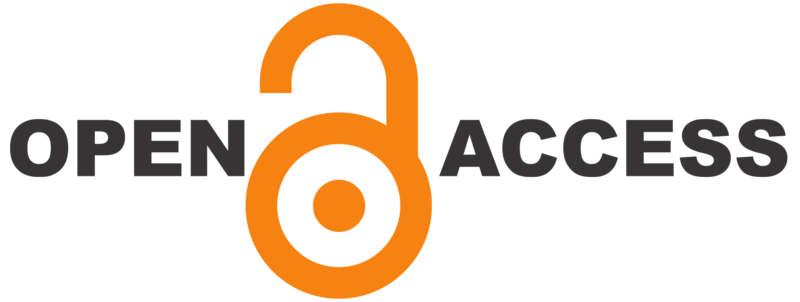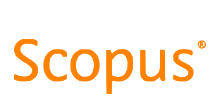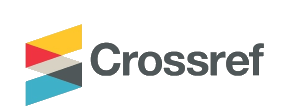Internship experiences in exercise and sports science: A comprehensive analysis of learning outcomes and professional development
DOI:
https://doi.org/10.21153/jtlge2025vol16no1art2182Abstract
This study investigated the educational outcomes and professional development of undergraduate exercise and sports science students through curricular internships. Analysis of data from 1,247 internships conducted between 2015-2020 at a large Italian university across diverse settings (fitness facilities, rehabilitation clinics, educational institutions, and sport organisations) revealed significant improvements in students' practical competencies, theoretical knowledge application, and professional identity development. Quantitative analysis demonstrated statistically significant increases in competency scores across all placement settings (p<0.001), with exercise post rehabilitation contexts showing the highest improvement in clinical reasoning (Cohen's d=0.89). Qualitative analysis identified four key themes influencing internship effectiveness: mentorship quality, alignment between academic preparation and practical demands, reflective practice opportunities, and professional networking. The tripartite relationship between students, university tutors, and industry supervisors emerged as central to internship effectiveness, particularly when characterised by regular structured communication and shared learning objectives. These findings suggest that structured internships with integrated reflection and assessment constitute a crucial transition phase in professional development, bridging theoretical knowledge and applied practice. Recommendations include standardised competency frameworks, mentor training programmes, and technology-enhanced collaborative assessment to maximise the educational value of exercise science internships.Metrics
References
Abraham, A., & Collins, D. (2011). Taking the Next Step: Ways Forward for Coaching Science. Quest, 63(4), 366–384. https://doi.org/10.1080/00336297.2011.10483687
Board, L., Caldow, E., Doggart, L., Knowles, Z., Pye, M. & Twist, C. (2014). The BASES position stand on curriculum-based work placements in sport and exercise sciences. British Association of Sport and Exercise Sciences. https://www.cases.org.uk/imgs/tsandes_position_stand183.pdf
Boud, D., & Falchikov, N. (2006). Aligning assessment with long‐term learning. Assessment & Evaluation in Higher Education, 31(4), 399–413. https://doi.org/10.1080/02602930600679050
Boud, D., & Walker, D. (1998). Promoting reflection in professional courses: The challenge of context. Studies in Higher Education, 23(2), 191–206. https://doi.org/10.1080/03075079812331380384
Braun, V., & Clarke, V. (2019). Reflecting on reflexive thematic analysis. Qualitative Research in Sport, Exercise and Health, 11(4), 589–597. https://doi.org/10.1080/2159676X.2019.1628806
Carroll, M. A., McKenzie, A., & Tracy-Bee, M. (2022). Movement System Theory and Anatomical Competence: Threshold Concepts for Physical Therapist Anatomy Education. Anatomical Sciences Education, 15(2), 420–430. https://doi.org/10.1002/ase.2083
Cereda, F. (2019). Curricular internship at school for students in exercise and sports science first degree. Formazione & Insegnamento, 17(3), 61–72. https://doi.org/10.7346/-feis-XVII-03-19_06
Cereda, F. (2021). From university education in sport and exercise science to the profession. Formazione & Insegnamento, 19(3) 42–51. https://doi.org/10.7346/-feis-XIX-03-21_05
Cereda, F. (2023). Building Bridges: Fostering a Positive Relationship Between Interns and Supervisors in Exercise and Sport Science. American Journal of Sports Science, 11(3), 68-75. https://doi.org/10.11648/j.ajss.20231103.12
Cereda, F. (2025). The shifting landscape of kinesiology in Italy: A call for epistemological re-evaluation and curricular reform. Formazione & Insegnamento, 23(1), 157–165. https://doi.org/10.7346/-fei-XXIII-01-25_19
Clanchy, K., Minahan, C., Cardell, E., & Bialocerkowski, A. (2021). Describing pre-professional identity in higher education: A case study of exercise science students. Journal of University Teaching and Learning Practice, 18(6), 174–192. https://doi.org/10.53761/1.18.6.12
Clanchy, K., Minahan, C., Cardell, E., & Bialocerkowski, A. (2022). Development and evaluation of a pre-professional identity workshop: A case study in exercise science. Journal of Teaching and Learning for Graduate Employability, 13(1), 155–170. https://doi.org/10.21153/jtlge2022vol13no1art1502
Clouder, L. (2005). Caring as a ‘threshold concept’: transforming students in higher education into health(care) professionals. Teaching in Higher Education, 10(4), 505–517. https://doi.org/10.1080/13562510500239141
Collins, A., Brown, J. S., & Holum, A. (1991). Cognitive apprenticeship: Making thinking visible. American Educator, 15(3), 6-11. https://www.psy.lmu.de/isls-naples/intro/all-webinars/collins/cognitive-apprenticeship.pdf
Commission on Accreditation of Allied Health Education Programs (2023). Standards and guidelines for the accreditation of educational programs. CAAHEP Template-2021. https://cdn.prod.website-files.com/5f466098a462432df91fef63/65133caddca3ef0097d5dab4_2023-03-17_BOARD%20APPROVED%20STANDARDS%20TEMPLATE%20ATTACHMENT%201_Corrected%20template%20date.pdf
Creswell, J. W., & Plano Clark, V. L. (2018). Designing and conducting mixed methods research (3rd ed.). SAGE
Cripps, A. J., Conlon, J. A., Ardzejewska, K., & Papaluca, C. (2023). Bimodal Work-Integrated Learning Experiences: Enhancing Graduate Attributes in Exercise and Sport Science. International Journal of Work-Integrated Learning, 24(4), 465-475. https://files.eric.ed.gov/fulltext/EJ1409103.pdf
Dall’Alba, G. (2009). Learning Professional Ways of Being: Ambiguities of becoming. Educational Philosophy and Theory, 41(1), 34–45. https://doi.org/10.1111/j.1469-5812.2008.00475.x
Desai, F., & Seaholme, T. (2018). Examining the impact of strength and conditioning internships on exercise and sport science undergraduate students. International Journal of Work-Integrated Learning, 19(1), 81–91. https://files.eric.ed.gov/fulltext/EJ1179834.pdf
Exercise & Sports Science Australia. (2023, September 1). Practicum standards (Version 1.1). https://www.essa.org.au/Common/Uploaded%20files/Standards/Practicum%20Standards%202023.pdf
Ferns, S. J., Zegwaard, K. E., Pretti, T. J., & Rowe, A. D. (2024). Defining and designing work-integrated learning curriculum. Higher Education Research & Development, 44(2), 371–385. https://doi.org/10.1080/07294360.2024.2399072
Fortune, T., Ennals, P., D’Cruz, K., McKinstry, C., & Kohn, H. (2024). Care, kindness and collegiality in occupational therapy practice and academic life. Higher Education Research & Development, 43(6), 1277–1291. https://doi.org/10.1080/07294360.2024.2325153
Gustavsson, M., & Bivall, A. C. (2025). The challenges clinical supervisors experience when supervising students in the workplace. Higher Education, Skills and Work-Based Learning, 15(7), 127-138. https://doi.org/10.1108/HESWBL-11-2024-0347
Hanlon, N. (2024). Relational justice and relational pedagogy in professional social care work. Social Work Education, 43(3), 570–587. https://doi.org/10.1080/02615479.2022.2123913
Jackson, D. (2018). Developing graduate career readiness in Australia: Shifting from extra-curricular internships to work-integrated learning. International Journal of Work-Integrated Learning, 19(1), 23-35. https://files.eric.ed.gov/fulltext/EJ1179832.pdf
Kinchin, I. M. (2022). Care as a threshold concept for teaching in the salutogenic university. Teaching in Higher Education, 27(2), 171–184. https://doi.org/10.1080/13562517.2019.1704726
Kolb, D. A. (2015). Experiential learning: Experience as the source of learning and development (2nd ed.). Pearson Education.
Lave, J., & Wenger, E. (1991). Situated learning: Legitimate peripheral participation. Cambridge University Press.
Meyer, J. H. F., & Land, R. (2005). Threshold concepts and troublesome knowledge (2): Epistemological considerations and a conceptual framework for teaching and learning. Higher Education, 49(3), 373–388. https://doi.org/10.1007/s10734-004-6779-5
Odlin, D., Benson-Rea, M., & Sullivan-Taylor, B. (2022). Student internships and work placements: approaches to risk management in higher education. Higher education, 83(6), 1409–1429. https://doi.org/10.1007/s10734-021-00749-w
Olivier, B., Verdonck, M., & Caseleijn, D. (2020). Digital technologies in undergraduate and postgraduate education in occupational therapy and physiotherapy: a scoping review. JBI evidence synthesis, 18(5), 863–892. https://doi.org/10.11124/JBISRIR-D-19-00210
Olson, R., Laidlaw, P., & Steel, K. (2018). 'No one wants to be taught from a textbook!': Pre-service health and physical education teachers' reflections on skill acquisition and a new curriculum. European Physical Education Review, 23(4), 135-151. https://doi.org/10.1177/1356336X16658222
Penman, M., Tai, J., Evans, G., Brentnall, J., & Judd, B. (2024). Designing near-peer mentoring for work integrated learning outcomes: a systematic review. BMC Medical Education, 24, 937. https://doi.org/10.1186/s12909-024-05900-6
Piovani, V. G. S., Vieira, S. V., Both, J., & Rinaldi, I. P. B. (2020). Internship at Sport Science undergraduate courses: A scoping review. Journal of Hospitality, Leisure, Sport & Tourism Education, 27. https://doi.org/10.1016/j.jhlste.2019.100233
Reddan, G. (2016). The role of work-integrated learning in developing students' perceived work self-efficacy. Asia-Pacific Journal of Cooperative Education, 17(4), 423-436. https://files.eric.ed.gov/fulltext/EJ1131584.pdf
Sargeant, J., Bruce, D., & Campbell, C. M. (2013). Practicing physicians' needs for assessment and feedback as part of professional development. The Journal of Continuing Education in the Health Professions, 33, S54–S62. https://doi.org/10.1002/chp.21202
Schary, D. P., & Cardinal, B. J. (2016). Starting to uncover the mystery of interdisciplinary research in kinesiology. Physical Educator, 73(2), 213-229. https://doi.org/10.18666/TPE-2016-V73-I2-6184
Schneider, J. R., Aaby, T., Boessenkool, S., Eriksen, E. F., Holtermann, K., Martens, I., Soulé, J., Steele, A., Zazzera, S., van der Meeren, G. I., Velle, G., Cotner, S., & Lane, A. K. (2024). Creating better internships by understanding mentor challenges: Findings from a series of focus groups. International Journal of STEM Education, 11. https://doi.org/10.1007/s40594-024-00518-y
Schön, D. A. (1987). Educating the reflective practitioner: Toward a new design for teaching and learning in the professions. Jossey-Bass.
Shelley, K., & McCuaig, L. (2020). Socio-critical lenses and threshold concepts in health, sport and physical education teacher education. Sport, Education and Society, 25(7), 764–778. https://doi.org/10.1080/13573322.2019.1661834
Silva, P., Lopes, B., Costa, M., Melo, A. I., Dias, G. P., Brito, E., & Seabra, D. (2018). The million-dollar question: Can internships boost employment? Studies in Higher Education, 43(1), 2-21. https://doi.org/10.1080/03075079.2016.1144181
Smart, K. M. (2023). Pain science and practice as a ‘threshold concept’ within undergraduate and pre-registration physiotherapy education: A jewel of the curriculum? BMC Medical Education, 23. https://doi.org/10.1186/s12909-023-04733-z
Smith, K., Burns, C., O’Neill, C., Duggan, J. D., Winkelman, N., Wilkie, M., & Coughlan, E. K. (2022). How to coach: A review of theoretical approaches for the development of a novel coach education framework. International Journal of Sports Science & Coaching, 18(2), 594-608. https://doi.org/10.1177/17479541221136222
Sousa, V. D., & Rojjanasrirat, W. (2011). Translation, adaptation and validation of instruments or scales for use in cross-cultural health care research: a clear and user-friendly guideline. Journal of Evaluation in Clinical Practice, 17(2), 268–274. https://doi.org/10.1111/j.1365-2753.2010.01434.x
Tariq, M. U. (2025). Integrating Theory and Practice: Transformative Approaches in Practice-Led Research for Professional Development. In S. Kwok, P. Yu, & J. Le Corre (Eds.), Exploring Practice-Led Research for Professional Development (pp. 419-436). IGI Global Scientific Publishing. https://doi.org/10.4018/979-8-3693-6376-8.ch016
Trede, F., Macklin, R., & Bridges, D. (2012). Professional identity development: A review of the higher education literature. Studies in Higher Education, 37(3), 365-384. https://doi.org/10.1080/03075079.2010.521237
Vygotsky, L. S. (1978). Mind in Society: Development of Higher Psychological Processes (M. Cole, V. Jolm-Steiner, S. Scribner, & E. Souberman, Eds.). Harvard University Press. https://doi.org/10.2307/j.ctvjf9vz4
Warren, J. L., & Warren, J. S. (2023). The case for understanding interdisciplinary relationships in health care. Ochsner journal, 23(2), 94–97. https://doi.org/10.31486/toj.22.0111
Watling, C. J., & Ginsburg, S. (2019). Assessment, feedback and the alchemy of learning. Medical Education, 53(1), 76–85. https://doi.org/10.1111/medu.13645
Wenger, E. (2000). Communities of practice: Learning, meaning, and identity. Cambridge University Press.
Yong, S. T., Chemmangattuvalappil, N. G., & Foo, D. C. Y. (2024). Students’ perception of non-placement work-integrated learning in chemical engineering: Work-related skills towards the post-pandemic future. South African Journal of Chemical Engineering, 47, 322–332. https://doi.org/10.1016/j.sajce.2023.12.008

Downloads
Published
Issue
Section
License
Copyright (c) 2025 Ferdinando Cereda

This work is licensed under a Creative Commons Attribution-NonCommercial 4.0 International License.











